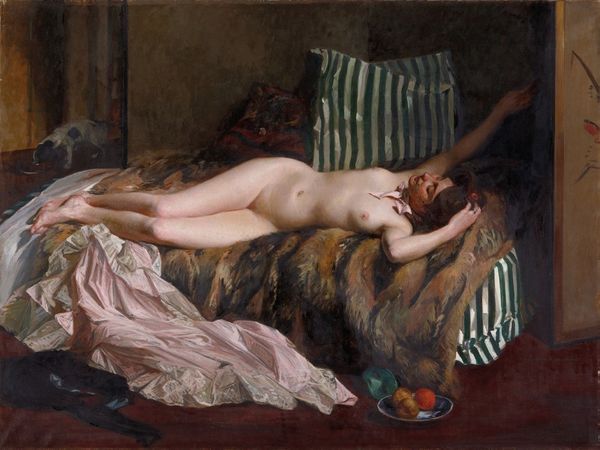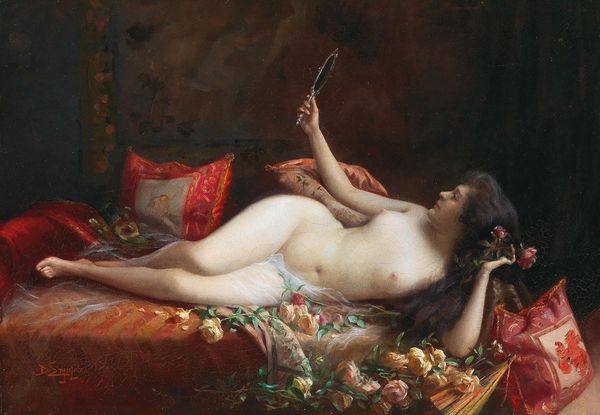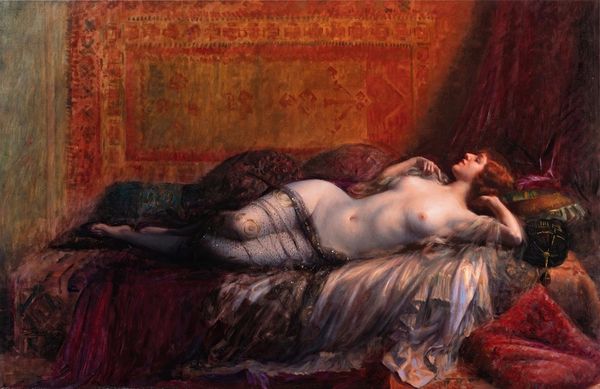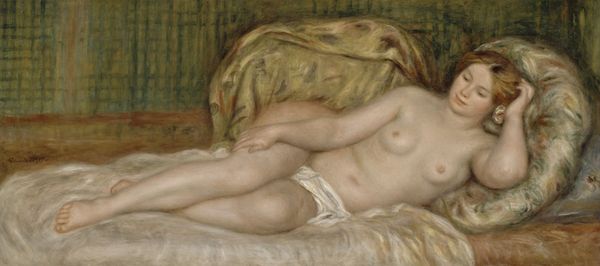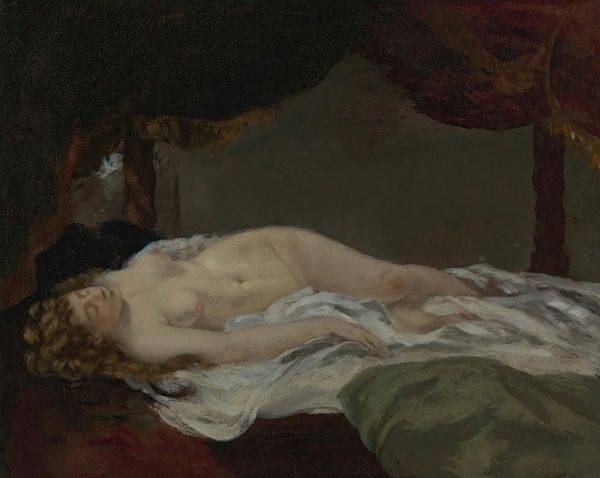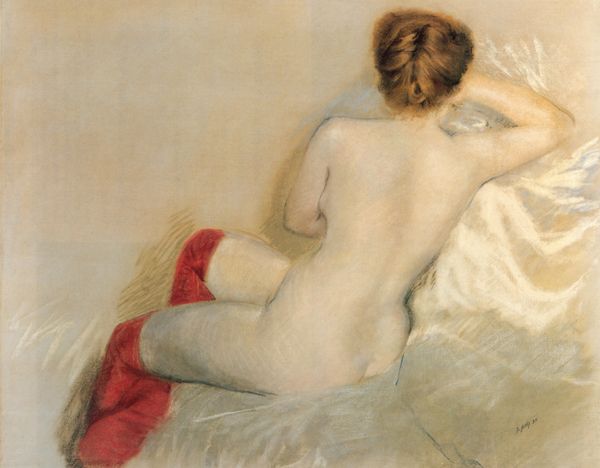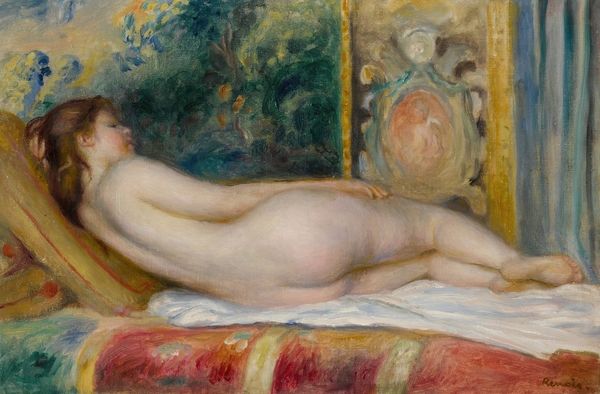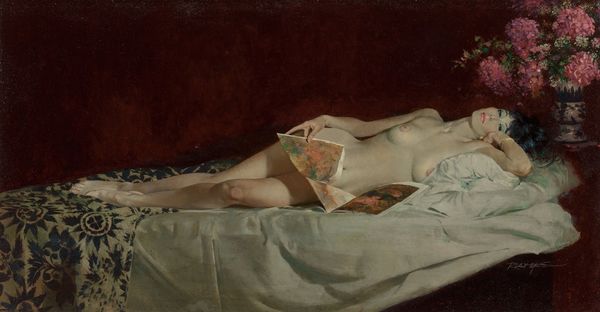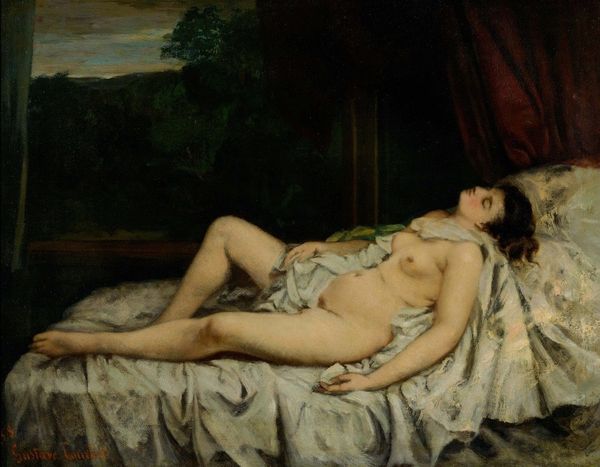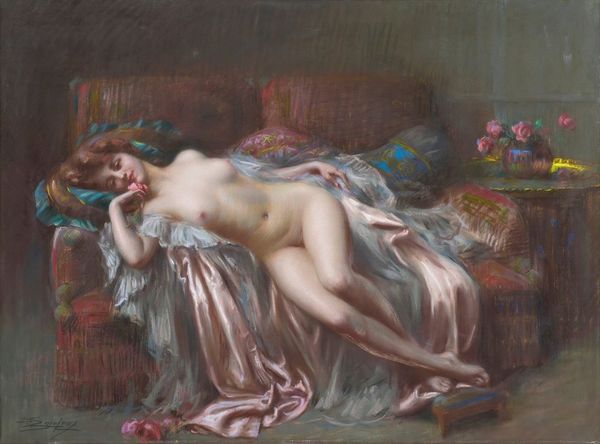
painting, oil-paint
#
figurative
#
painting
#
oil-paint
#
figuration
#
orientalism
#
genre-painting
#
history-painting
#
academic-art
#
nude
#
realism
Copyright: Public Domain: Artvee
Editor: So, this is Jules Joseph Lefebvre’s "Odalisque" from 1874. It’s an oil painting, and the figure is just so… smooth. It has such a still and sensual feel. How should we interpret the context of this piece? Art Historian: Well, "Odalisque" participates in a longer history of Western artistic fantasies about the “Orient.” It's not simply a nude; it's a loaded image, particularly in relation to gender and power dynamics. What do you observe about the figure's pose and the objects surrounding her? Editor: She seems relaxed, almost indifferent, and she’s surrounded by very lavish textiles, a hookah and a servant to indulge in a pampered lifestyle. Art Historian: Exactly! This painting, like many from the Orientalist movement, reflects a specific colonial gaze, appropriating and often misrepresenting cultures of North Africa and the Middle East. The title itself, "Odalisque," refers to a female slave in a harem. Consider who is looking, who has the power to look, and whose culture is being represented through this artwork. This creates several complex dialogues about cultural exchange, fetishization and representation of women. Do you think Lefebvre fairly portrays Middle Eastern culture here? Editor: That's really eye-opening. Thinking about it that way, it doesn't seem as romantic anymore but more…exploitative. Thanks, now I know more than when I started! Art Historian: Art enables conversations on sensitive topics if we unpack how these cultural and historical values intersect. Hopefully, reflecting on the artwork from different cultural lenses gave us both a wider view on historical accuracy.
